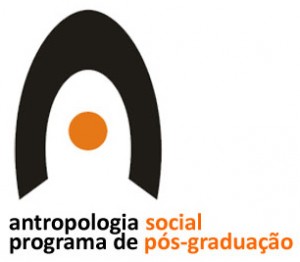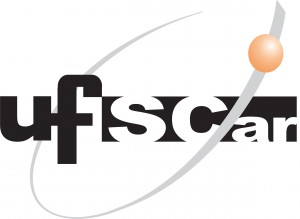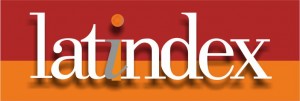Quando macacos e humanos compõem mundos
relações entre o carayá (bugio-preto) e os Qom no Gran Chaco
DOI:
https://doi.org/10.52426/rau.v10i2.257Palavras-chave:
relações humano-animais, ontologia, primatas, Alouatta caraya, povos indígenasResumo
Esta contribuição se propõe a analisar as relações entretecidas entre os Qom (Toba) e os macacos uivadores (Alouatta caraya, conhecidos no Brasil como bugios-pretos, e na Argentina como carayás) no Gran Chaco argentino. Para tanto, retoma a mitologia que vincula os primatas não-humanos aos Qom, com o objetivo de rastrear a origem da humanidade, da animalidade e de suas convergências. Acrescentam-se indagações sobre os cenários atuais de relações entre primatas humanos e não-humanos. Finalmente, e por meio de exercício comparativo, conclui-se que os bugios-pretos não são a mesma coisa para os Qom e para os não-indígenas; contudo, o que o caso revela são as múltiplas maneiras de compor mundos onde macacos e humanos se relacionam.
Referências
BALDUCCI, María Isabel. 1982. Códigos de comunicación con el mundo animal entre los Toba-Taksik. Dissertação de Grado. Universidad de Buenos Aires, Buenos Aires.
BERTONATTI, Claudio. 1995. “El comercio de primates en la República Argentina”. Neotropical Primates, 3(2):35-37.
BERROS, Valeria. 2015. “Breve contextualización de la reciente sentencia sobre el habeas corpus en favor de la orangutana Sandra: entre ética animal y derecho”. Abeledo Perrot, Revista de Derecho Ambiental, 41: 1-13.
BUCKWALTER, Alberto; LITWILLER de BUCKWALTER, Lois. 2001. Vocabulario toba. Elkhart, Indiana: Equipo Menonita.
BLASER, Mario. 2016. “Is Another Cosmopolitics Possible?”. Cultural Anthropology, 31(4):545-570.
______. 2009. “The Threat of the Yrmo: The Political Ontology of a Sustainable Hunting Program”. American Anthropologist, 111(1):10-20.
______. 2013. “Notes Towards a Political Ontology of ‘Environmental’ Conflicts”. In: L. Green (ed.), Contested Ecologies: Nature and Knowledge. Cape Town: Human Science Research Council of South Africa Press. pp. 13-27.
BRUNER, Emiliano; CUCINA, Andrea. 2005. “Alouatta, Ateles, and the ancient Mesoamerican cultures”. Journal of Anthropological Sciences, 83:111-117.
CANEVARI, Marcelo; VACCARO, Olga. 2007. Guía de mamíferos del sur de América del Sur. Buenos Aires: LOLA.
CAYÓN, Luis. 2012. “Plans de vie et gestion du monde: cosmopolitique autochtone du développement en Amazonie colombienne”. Recherches amérindiennes au Québec, 42(2-3):63-77.
CHEBEZ, Juan Carlos. 2009. Otros que se van. Fauna argentina amenazada. Buenos Aires: Albatros.
CHEBEZ, Juan Carlos; PEREIRA, Javier; MASSOIA, Elio; Di GIACOMO, Alejandro; HEINONEN FORTABAT, Sofía. 2005. “Mamíferos de la Reserva El Bagual”. In: A. G. Di Giacomo & S. F. Krapovickas (eds.), Historia natural y paisaje de la Reserva El Bagual, Formosa, Argentina. Buenos Aires: Aves Argentinas/Asociación Ornitológica del Plata. pp. 467-499.
CORMIER, Loretta. 2003a. Kinship with monkeys: the Guajá foragers of eastern Amazonia. New York: Columbia University Press.
______. 2003b. “Animism, Cannibalism, and Pet-keeping among the Guajá of Eastern Amazonia”. Tipití, 1(1):81-98.
______. 2006. “A preliminary review of Neotropical primates in subsistence and symbolism of indigenous lowland South American peoples”. Ecological Environmental Anthropology, 2:14-32.
CORMIER, Loretta; URBANI, Bernardo. 2008. “The ethnoprimatology of the spider monkey (Ateles spp.): from past to present”. In: C. Campbell (ed.), Spider monkeys: the biology, behavior and ecology of the genus Ateles. Cambridge: Cambridge University Press. pp. 377-403.
DESCOLA, Philippe. 2016. La composición de los mundos. Conversaciones con Pierre Charbonnier. Buenos Aires: Capital Intelectual.
______. 2014. “The difficult art of composing worlds (and of replying to objections)”. Hau: Journal of Ethnographic Theory, 4(3):431-443.
______. 2012. Más allá de naturaleza y cultura. Buenos Aires: Amorrortu.
______. 2010. “Cognition, Perception and Worlding”. Interdisciplinary Science Reviews, 35(3-4):334-340.
______. 1998. “Estructura ou sentimento: a relação com o animal na Amazônia”. Mana, 4(1):23-45.
Di GIMINIANI, Piergiorgio. 2013. “The contested rewe: sacred sites, misunderstandings, and ontological pluralism in Mapuche land negotiations”. Journal of the Royal Anthropological Institute, 19:527-544.
ERIKSON, Philippe. 2000. “The social significance of pet-keeping among amazonian Indians”. In: A. L. Podberscek; E. S. Paul & J. A. Serpell (eds.), Companion Animals and Us. Cam bridge: Cambridge University Press. pp. 7-26.
FERNANDEZ BRAVO, Álvaro. 2013. “Eduardo Viveiros de Castro: Some Reflections on the Notion of Species in History and Anthropology”. E-misférica, 10(1). Disponível em: <http://hemisphericinstitute.org/hemi/es/e-misferica-101/viveiros-de-castro>. Acesso em: 27 mar. 2017.
FUENTES, Agustín. 2006. “Human-Nonhuman Primate Interconnections and Their Relevance to Anthropology”. Ecological and Environmental Anthropology, 2(2):1-11.
______. 2010. “Naturalcultural encounters In Bali: Monkeys, Temples, Tourists, and Ethnoprimatology”. Cultural Anthropology, 25(4):600-624.
HARAWAY, Donna. 1995. Ciencia, cyborgs y mujeres. La reinvención de la naturaleza. Madrid: Ediciones Cátedra.
______. 2014. Manifiesto para cyborgs. Ciencia, tectnología y feminismo socialista a finales del Siglo XX. Mar del Plata: Puente Aéreo Ediciones.
HOLBRAAD; Martin; PEDERSEN, Morten Axel. 2017. The ontological turn. An Anthropological Exposition. United Kingdom: Cambridge University Press.
KARSTEN, Rafael. 1932. “Indian tribes of the Argentine and Bolivian Chaco”. Societas Scientiarum Fennica, 4:10-126.
LATOUR, Bruno. 2007. Nunca fuimos modernos. Ensayo de antropología simétrica. Buenos Aires: Siglo XXI.
______. 2017. Cara a cara con el planeta. Una nueva mirada sobre el cambio climático alejada de las posiciones apocalípticas. Buenos Aires: Siglo XXI.
MARTÍNEZ DUEÑAS, William Andrés. 2012. “Quand H2O et esprit de l’eau se rencontrent: coexistence de plusieurs mondes à Puracé, Colombie”. Recherches amérindiennes au Québec, 42(2-3):39-47.
MEDRANO, Celeste. 2016a. “Los no-animales y la categoría ‘animal’. Definiendo la zoo-sociocosmología entre los toba (qom) del Chaco argentino”. Mana, 22(2): 369-402.
______. 2016b. “Hacer a un Perro. Relaciones entre los qom del Gran Chaco Argentino y sus compañeros animales de caza”. Anthropos, 111:113-125.
______. 2014. “Zoo-sociocosmología qom: seres humanos, animales y sus relaciones en el Gran Chaco”. Journal de la Societé des Americanistes, 100(1):225-257.
______. 2013. “Devenir-en-transformación: debates etnozoológicos en torno a la metamorfosis animal entre los qom”. In: F. Tola; C. Medrano & L. Cardin (eds.), Gran Chaco. Ontología, poder, afectividad. Buenos Aires: IWGIA/Rumbo Sur. pp. 77-101.
MEDRANO, Celeste; MAIDANA, Mauricio; GÓMEZ, Cirilo. 2011. Zoología Qom. Conocimientos tobas sobre el mundo animal. Santa Fe, Ediciones Biológica.
MÉTRAUX, Alfred. 1946. “Indians of the Gran Chaco. Ethnography of the Chaco”. In: J. H. Steward (ed.), Handbook of South American Indians, 1, The marginal tribes. Washington: Smithsonian Institute, Bureau of American Ethnology. pp. 197-370.
MORELLO, Jorge; RODRÍGUEZ, Andrea; SILVA, Mariana. 2009. “Clasificación de ambientes en áreas protegidas de las ecorregiones Del Chaco húmedo y seco”. In: J. Morello & A. Rodríguez (eds.), El Chaco sin bosques: la Pampa o el desierto del futuro. Buenos Aires: Orientación Gráfica. pp. 53-91.
NADASDY, Paul. 2007. “The Gift in the Animal: The Ontology of Hunting and Human-Animal Sociality”. American Ethnologist, 34(1):25-43.
OJEDA, Ricardo; CHILLO, Verónica; DÍAZ ISENRATH, Gabriela (eds.). 2012. Libro Rojo de Mamíferos Amenazados de la Argentina. Argentina: Sociedad Argentina para el Estudio de los Mamíferos (SAREM).
POVINELLI, Elizabeth. 2001. “Radical Worlds: The Anthropology of Incommesurability and Inconceivability”. Annual Review of Anthropology, 30:319-335.
ROSSO, Cintia. 2011. “Epidemias de viruela en las reducciones chaqueñas de abipones y mocovíes durante el siglo XVIII”. Eä, 2(3). Disponível em: < http://www.ea-journal.com/art2.3/Epidemias-de-viruela-en-reducciones-chaquenas-de-abipones-y-mocovies-siglo-XVIII.pdf >. Acesso em: 18 oct. 2016.
SÁ, Guilherme. 2013. No mesmo galho: antropologia de coletivos humanos e animais. Rio de Janeiro: 7 Letras.
SMART, Alan; SMART Josephine. 2017. Posthumanism. Toronto: University of Toronto Press.
TAYLOR, Ann-Christine. 2001. “Wives, Pets, and Affines: Marriage among the Jivaro”. In: L. Rival & N. Whitehead (eds.), Beyond the Visible and the Material. New York: Oxford University Press. pp. 45-56.
TERÁN, Buenaventura. 2005. Lo que cuentan los tobas. Buenos Aires: Ediciones del Sol.
TOLA, Florencia. 2014. “The materiality of ‘Spiritual Presences’ and the Notion of Person in an Amerindian Society”. In: R. Blanes & D. Espírito Santo (eds.), The Social Life of Spirits. Chicago: The University of Chicago Press. pp. 69-92.
______. 2012. Yo no estoy solo en mi cuerpo. Cuerpos-personas múltiples entre los tobas del Chaco argentino. Buenos Aires: Biblos/Culturalia.
URBANI, Bernardo. 2005. “The targeted monkey: a re-evaluation of predation on New World primates”. Journal of Anthropological Sciences, 83:89-109.
URBANI, Bernardo; CORMIER, Loretta. 2015. “The Ethnoprimatology of the Howler Monkeys (Alouatta spp.): From Past to Present”. In: M. M. Kowalewski; P. A. Garder; L. Cortés-Ortiz; B. Urbani & D. Youlatos (eds.), Howler Monkeys, Developments in Primatology: Progress and Prospects. New York: Springer. pp. 259-280.
VANDER VELDEN, Felipe. 2015. “Apresentação ao Dossiê”. R@U, 7(1):7-16.
VIANNA, João. 2015. Entre donos de pets, primatólogos, caçadores e xamãs baniwa: algumas comparações acerca do humano e não humano. R@U, 7(1): 126-149.
VIVEIROS DE CASTRO, Eduardo. 2013. La mirada del jaguar. Introducción al perspectivismo amerindio. Buenos Aires: Tinta Limón.
______. 2004. “Perspectival Anthropology and the Method of Controlled Equivocation”. Tipití, 2(1):3-22.
VUOTO, Diego Luis. 1981. Aspectos de la interrelación entre la fauna y la cultura toba-taksek. Dissertação de Grado. Universidad de Buenos Aires, Buenos Aires.
WAGNER, Roy. [1975] 2010. A invenção da cultura. São Paulo: CosacNaify.
WILBERT, Johannes; SIMONEAU, Karin (eds.). 1983. Folk literature of the Toba Indians (Vol. 1). Los Ángeles: UCLA.
______. (1989). Folk literature of the Toba Indians (Vol. 2). Los Ángeles: UCLA.
WILLERSLEV, Rane. 2007. Soul hunters: hunting, animism, and personhood among the Siberian Yukaghirs. Berkeley, Los Angeles: University of California Press.
WRIGHT, Pablo. 2008. Ser-en-el-sueño. Crónicas de historia y vida toba. Buenos Aires: Biblos/Culturalia.
ZUNINO, Gabriel; KOWALEWSKI, Martin. 2008. “Primate research and conservation in northern Argentina: The field station Corrientes (Estación Biológica de Usos Múltiples – EBCo)”. Tropical Conservation Science, 1(2):140-150.
Downloads
Publicado
Como Citar
Edição
Seção
Licença
Copyright (c) 2018 Revista de Antropologia da UFSCar

Este trabalho está licenciado sob uma licença Creative Commons Attribution-ShareAlike 4.0 International License.





